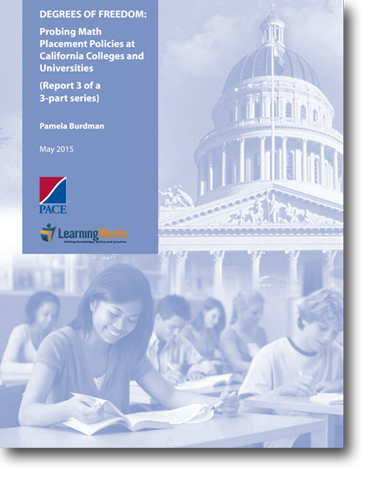Math placement tests deserve more scrutiny

Mathematics plays a central role in winnowing opportunities for students to enter and succeed in college. In California, students can graduate from high school with just two years of math, including a single college-preparatory course, Algebra 1. But if they don’t also complete Geometry and Algebra 2 (or, with the introduction of the Common Core state standards, an integrated pattern of courses covering the same material), students aren’t eligible to attend either of the state’s public university systems.
Last month, Governor Jerry Brown took an important step toward insuring more students the chance to take those courses: He signed a bill, SB-359, requiring school districts to adopt “fair, objective, and transparent” policies for determining how to place students into math courses when they start high school. The new policy means that students can’t arbitrarily be directed off the college math-ready track. This is good news for ensuring that more students, including more under-represented minorities, acquire the foundational math skills they need before college.
But bad news awaits too many students at the college gateway. That’s because taking the right courses in high school doesn’t guarantee access to college-level math courses at the state’s colleges and universities. To varying degrees, all three higher education systems in California use placement tests to determine whether students are ready for required college-level math courses. Those who aren’t – including up to 85 percent of community college students and 33 percent of students at California State University – must take one or more remedial courses.
The problem is that the placement tests used by most campuses have limited efficacy for placing students. Research in California and nationallyMath placement tests deserve more scrutiny | EdSource:
